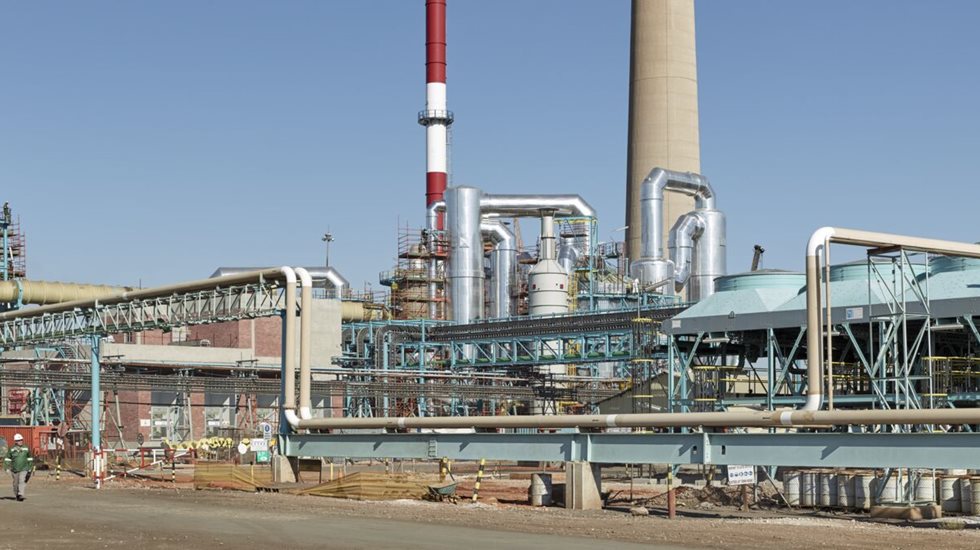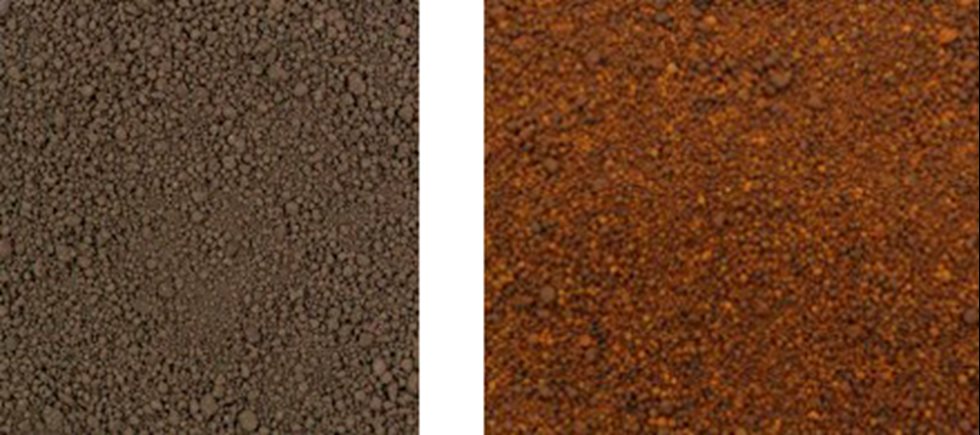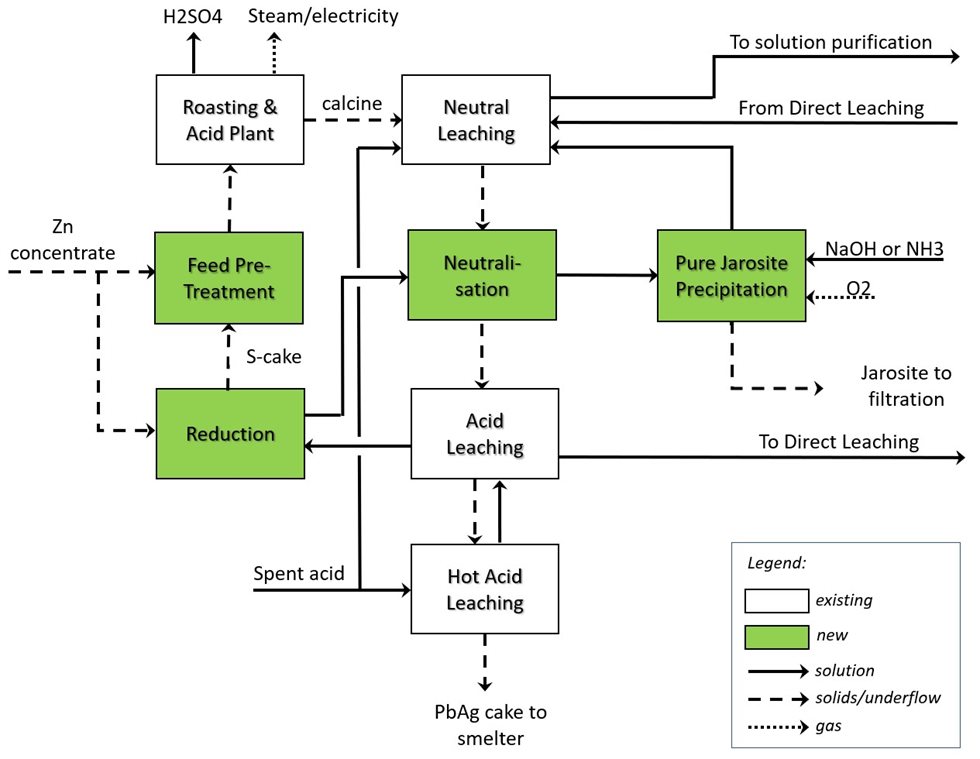Due to its rheologic characteristic sulfur cake requires extensive dumping areas. Attempts to upgrade it into a saleable product have not been successful so far. Co-combustion of sulfur cake with zinc concentrate in fluid bed roasting furnaces frequently causes operation difficulties in downstream plant equipment. Sulfur cake lumps evaporate partially in the furnace and condense in colder plant sections forming sticky coatings in gas cleaning equipment.
Outotec confirmed in pilot test work that sulfur residues can be completely combusted in the roasting furnace. It is essential that the fine-grained material is completely disintegrated and homogenously blended with other feed materials.
Our engineering team consisting of Jochen Güntner, Maciej Wrobel and Alexandros Charitos designed a solution to solve this problem – the Outotec Feed Preparation System (FPS), which is currently under construction on the American continent. It is integrated into the complex feed area of an existing zinc smelter. Feed materials are sulfur residue and fine zinc concentrates. FPS is suitable for different fine and ultrafine feed materials like sulfur cake, waelz oxide, dust and fine zinc concentrates.
Jochen Güntner, Senior Roasting Product Manager, told us more about the system.
How does the Feed Preparation System work?
The Outotec Feed Preparation System (FPS) ensures optimum homogeneity of the feed blend. In addition, fine constituents of other feed materials are captured in microgranules of 0.1 – 0.7 mm size. This artificial coarsening of the feed materials permits roasting of feed materials that otherwise are too fine for fluid bed roasting.
Picture 1 shows a typical feed material after homogenization and microgranulation. The corresponding furnace discharge is shown in picture 2.


